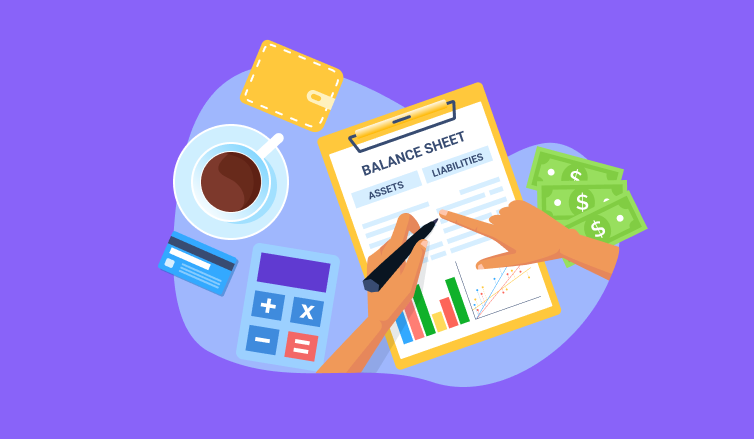
A balance sheet is one of the most vital reports a business can ever create. It depicts total assets, liabilities, and equity. Thus, it gives a clear snapshot of a company’s financial health and position.
Download our free balance sheet template for Excel to prepare a balance sheet for your own business. And read along as we talk about the essence of this financial document, its core elements, and how to make it right.
What Is a Balance Sheet?
A balance sheet is a financial statement that gives an overview of a company’s financial position at any current moment or over time. It reports on everything that a company owns (i.e., assets) and shows how much debt (i.e., liabilities) it has. Besides, it provides information on the amount of money owned by its shareholders (i.e., equity). And by doing all that, a balance sheet supports company owners, investors, and other key stakeholders during financial analysis, bookkeeping, and strategic management.
3 Core Balance Sheet Elements
• Assets
An asset is any resource that a company owns, controls, and may turn into cash either in the short or the long term. More precisely, based on how fast the company can convert its resources or goods into cash, they are divided into current / liquid assets and non-current / non-liquid assets:
- The former group can be turned into cash relatively quickly, within a year or so. It includes money in any form, marketable securities, accounts receivable, etc.
- The latter category comprises such assets as property, equipment, and patents that are generally harder to convert into cash quickly.
• Liabilities
Simply put, a liability means debt. It is anything that a company owes to its partners, suppliers, banks, and the government. And just like in the case of assets, liabilities can be categorized as current and non-current depending on how soon they must be settled.
- Current liabilities are due within a short-term period, typically a year. They include supplier invoices (aka accounts payable), short-term bank loans, income taxes, etc.
- In contrast, non-current liabilities are to be settled within a more extended period. They comprise long-term bank loans, pension benefit obligations, leases, and so on.
• Equity
Equity is the sum of money that a company’s shareholders own, and it’s calculated by subtracting business liabilities from the total of assets possessed. Put differently, equity is the net worth of a business and depicts its real value.
How to Create a Balance Sheet?
- Define a preferable reporting period.
- Identify your assets and calculate their values (individual, subtotal, and total).
- State your liabilities and calculate all their values too.
- Figure out shareholders’ equity.
- Sum up total liabilities with equity and compare the received figures to total assets – these numbers should always match.
- In case they don’t, you need to check the accuracy of your accounting data. Verify if the numbers are correct and whether no piece of information is missing or got duplicated.
How to Use Your Balance Sheet?
The data showcased in a balance sheet will be of use in calculating multiple financial ratios. For instance, it can help you measure the debt-to-equity ratio that reflects a company’s ability to pay for all outstanding debts in case of a compelling need. This way, balance sheets show you how strong your business is financially and whether you need to change your internal policies and operations for the better.
A well-developed balance sheet is incredibly insightful, and it is definitely one of the most vital reporting instruments for any business that aspires to stay efficient, competitive, and profitable. Thus, be sure to learn how to craft your balance sheets the right way.












































